Back to the EV Future: We drive electric DeLorean DMC-12
We drive a DeLorean that has had its uninspiring V6 engine swapped for a potent electric motor
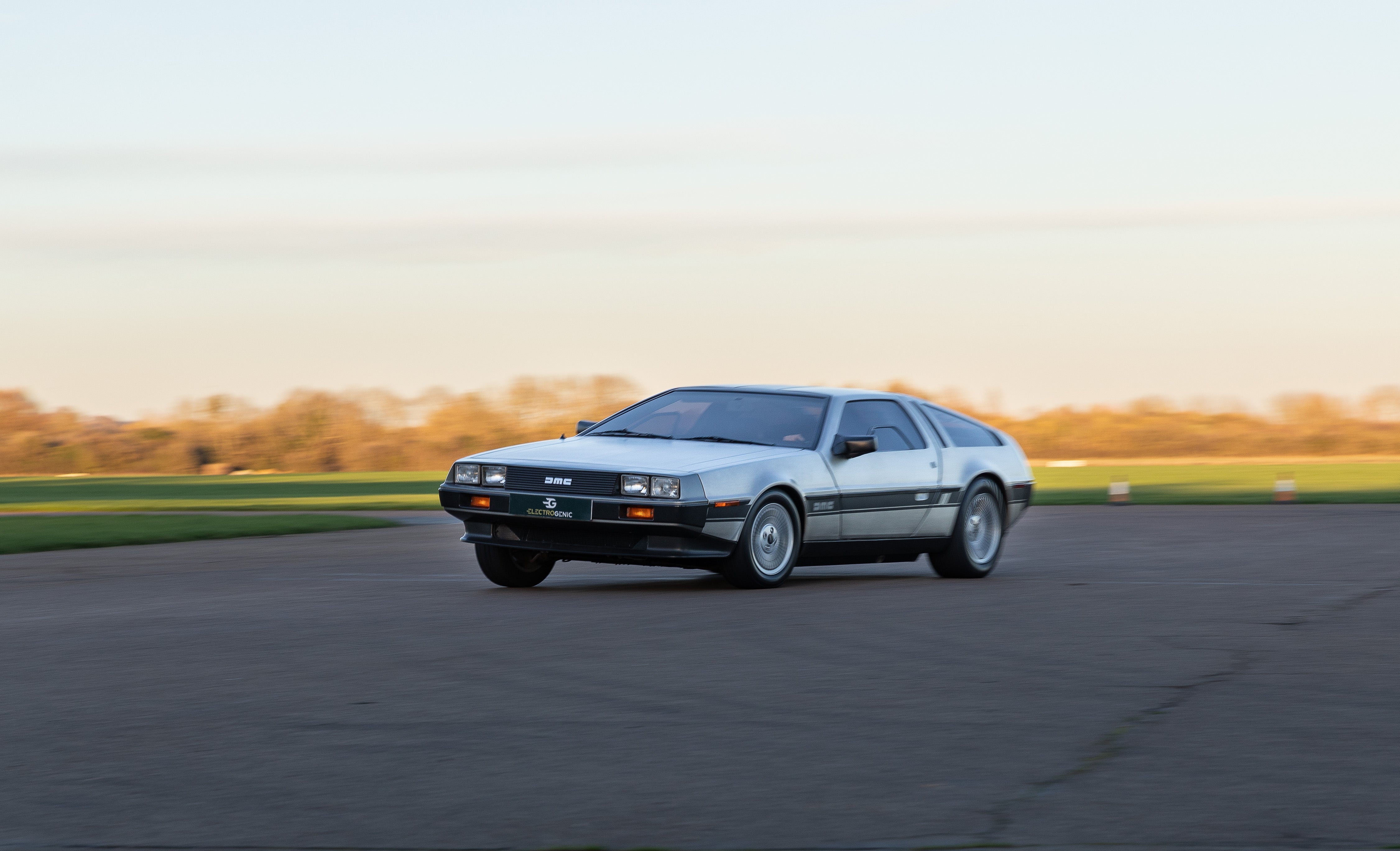
The Independent's Electric Vehicles Channel is sponsored by E.ON Next.
Is there a classic car better-suited to being swapped from petrol to electricity than a DeLorean DMC-12? World-famous for its role in Back to The Future, the stainless steel wedge of 1980s cool has always been a car that looks incredible, but was let down by a characterless and underpowered engine.
So what if that engine is taken out and replaced by a battery and an electric motor? That’s exactly what a British company called Electrogenic has done, while leaving almost everything else exactly as it was. The exposed metal bodywork, the gull-wing doors and the instantly-recognisable styling all remain, but now the car has performance to match the looks – plus powerful air conditioning and, yes, a flux capacitor installed between the two seats.
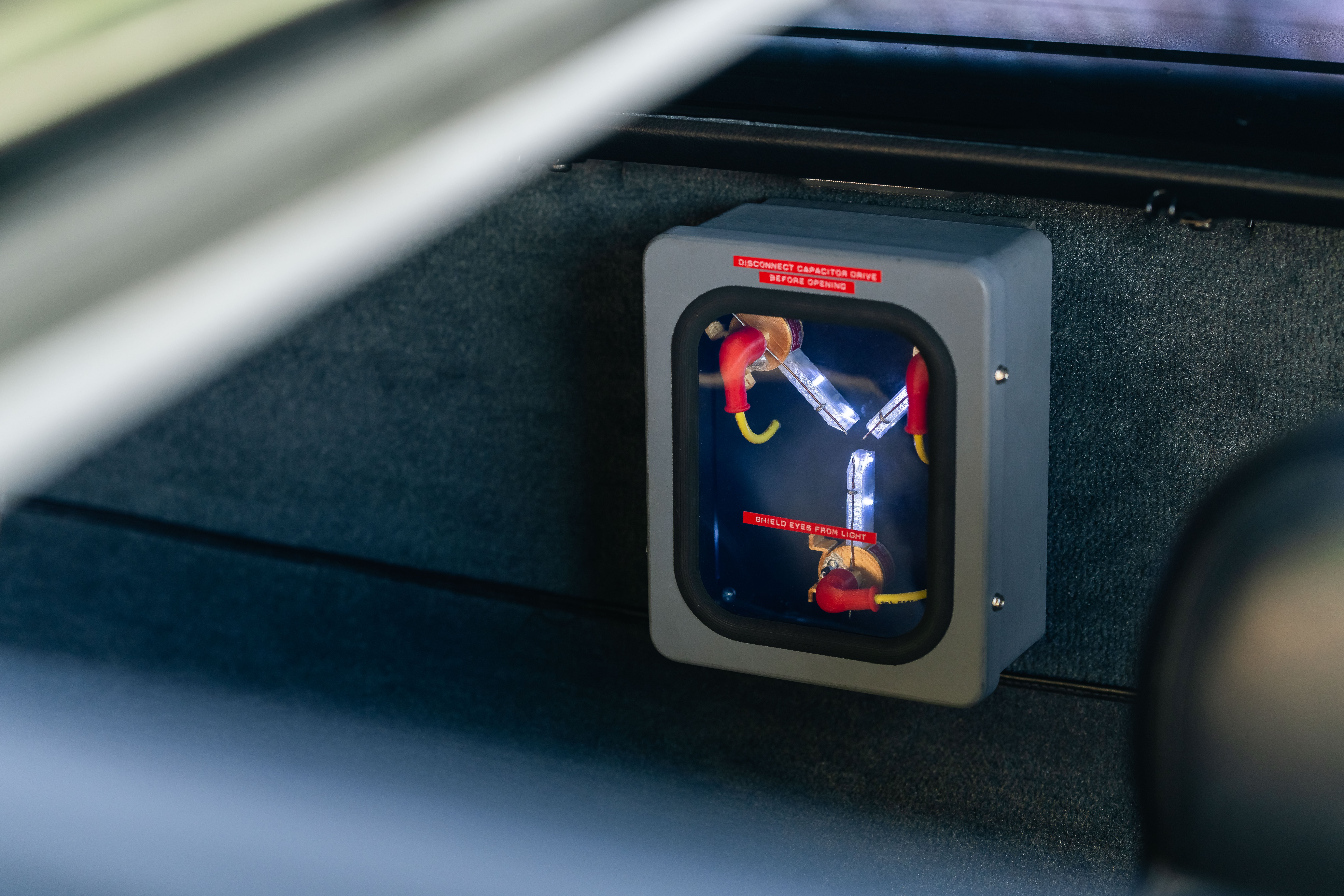
Based in Oxfordshire and established in 2017, Electrogenic is an electric vehicle specialist with several strings to its bow. As well as bespoke projects like the DeLorean – and a 1929 Rolls-Royce electrified for Aquaman actor Jason Mamoa – it also builds EV conversion kits for several models of classic car, including all pre-2016 Land Rover Series/Defenders, all versions of Jaguar E-Type, the classic Mini and Volkswagen Beetle, the Triumph Stag, Jaguar XJS and Morris Minor.
The idea is, these electric conversion kits are sold to restoration companies and car workshops, who can then offer them as an extra service to their customers. That way, you could ask your classic Mini specialist for a new interior, uprated suspension and a switch to electric, for example, rather than going directly to Electrogenic itself.
Electrogenic is also working with the British Ministry of Defense on electric powertrains for military Land Rovers and other vehicles, and it’s working with several unnamed vehicle manufacturers on developing EVs.
Speaking about the DeLorean, Electrogenic founder and CEO Steve Drummond said: “The great thing about bespoke projects is that there’s another person involved; you have the customer who has a vision and they want to see aspects of it done a particular way…The owner of this car, in his own words, has every supercar going and now he’s bored of all those. He wanted something cool to be a daily driver, so he bought this car specifically to convert it.”
Echoing many a DeLorean enthusiast, Drummond concedes the DMC-12 was “a bit disappointing” in its original format. Powered by a 2.85-litre V6 engine, the car produced just 130 hp when it launched in 1981. Despite the supercar styling by Italdesign’s Giorgetto Giugiuaro – a man whose CV is packed with supercars from Ferrari, Maserati and Lotus – the DeLorean could only trundle its way to 60 mph in 10.5 seconds.
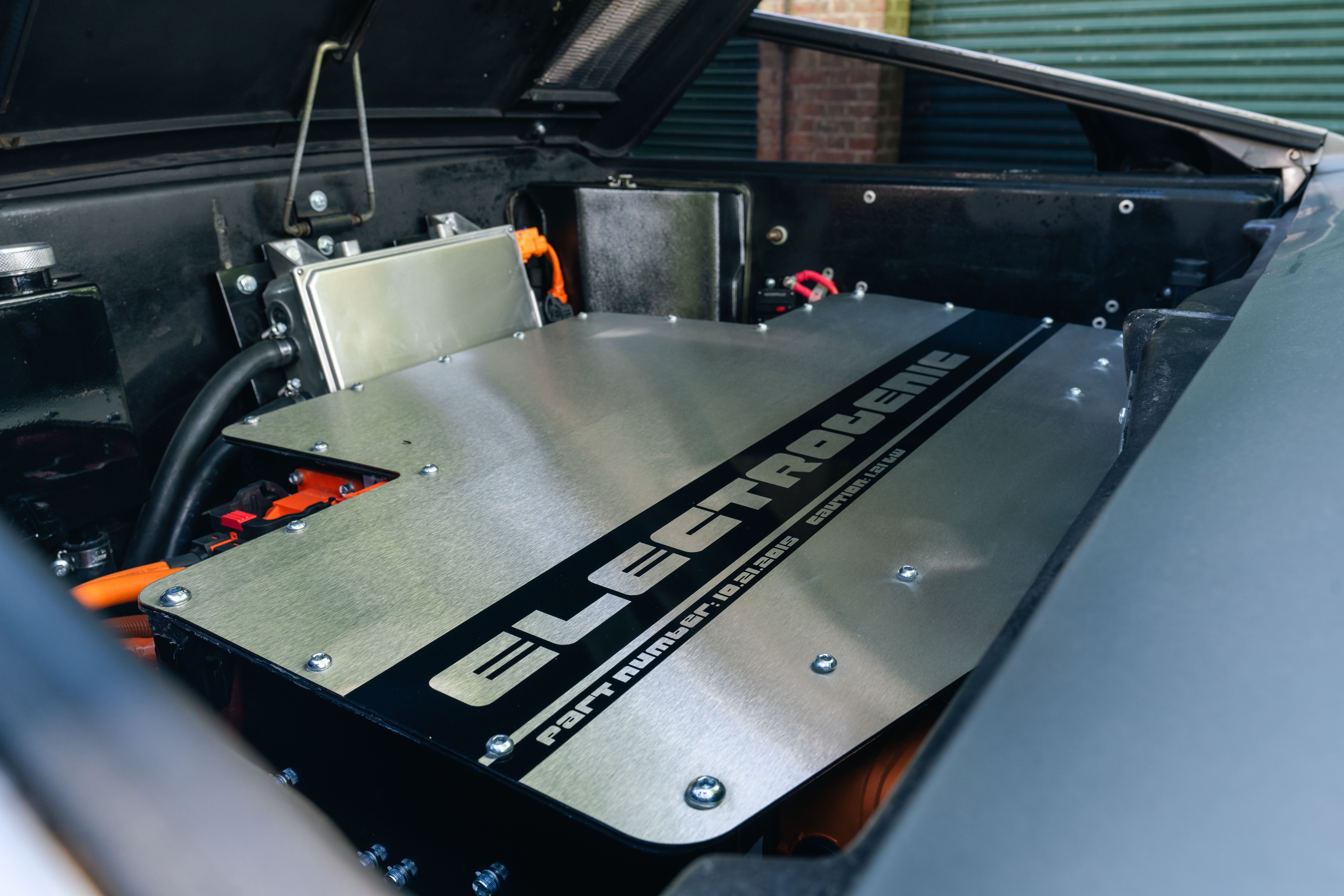
Not so, this DMC-12. The engine has been replaced by a 160 kW (215 hp) motor and 43 kWh battery. Torque is up from 153 to 229 lb-ft and the 0-60 mph time is now a far more respectable 4.8 seconds. Drummond claims it’ll do 140 miles of “real-world” driving in warmer summer months, and CCS charging tech means it can fill its battery at up to 60 kW on a public charger, or at 6.6 kW from a wallbox charger at home. Ingeniously, the charge port is hidden behind the rear number plate.
Electrogenic says the car weighs just 40 kg more than when new, and because the motor and battery fit where the engine used to be (plus there’s another small battery pack in place of the fuel tank) the interior and under-bonnet storage are unchanged. The only visual difference is the lack of an exhaust, and how the gear shifter has been replaced by a rotary dial, plus there’s a second dial for switching between drive modes. A modern infotainment system has also been installed, with a motorised, fold-out screen that runs Apple CarPlay.
There are three drive modes – Eco, Normal and Sport – each with its own power output and accelerator responsiveness, and Electrogenic has developed its own air conditioning system, which is powered from the high-voltage battery for maximum efficiency. This upgrade is crucial, Drummond says, since only a tiny part of the DeLorean’s side windows actually opens.
In keeping with Electrogenic’s ‘nothing cut, nothing drilled’ philosophy, the electric conversion is fully reversible, should the owner want to swap the motor and battery back for the original V6.
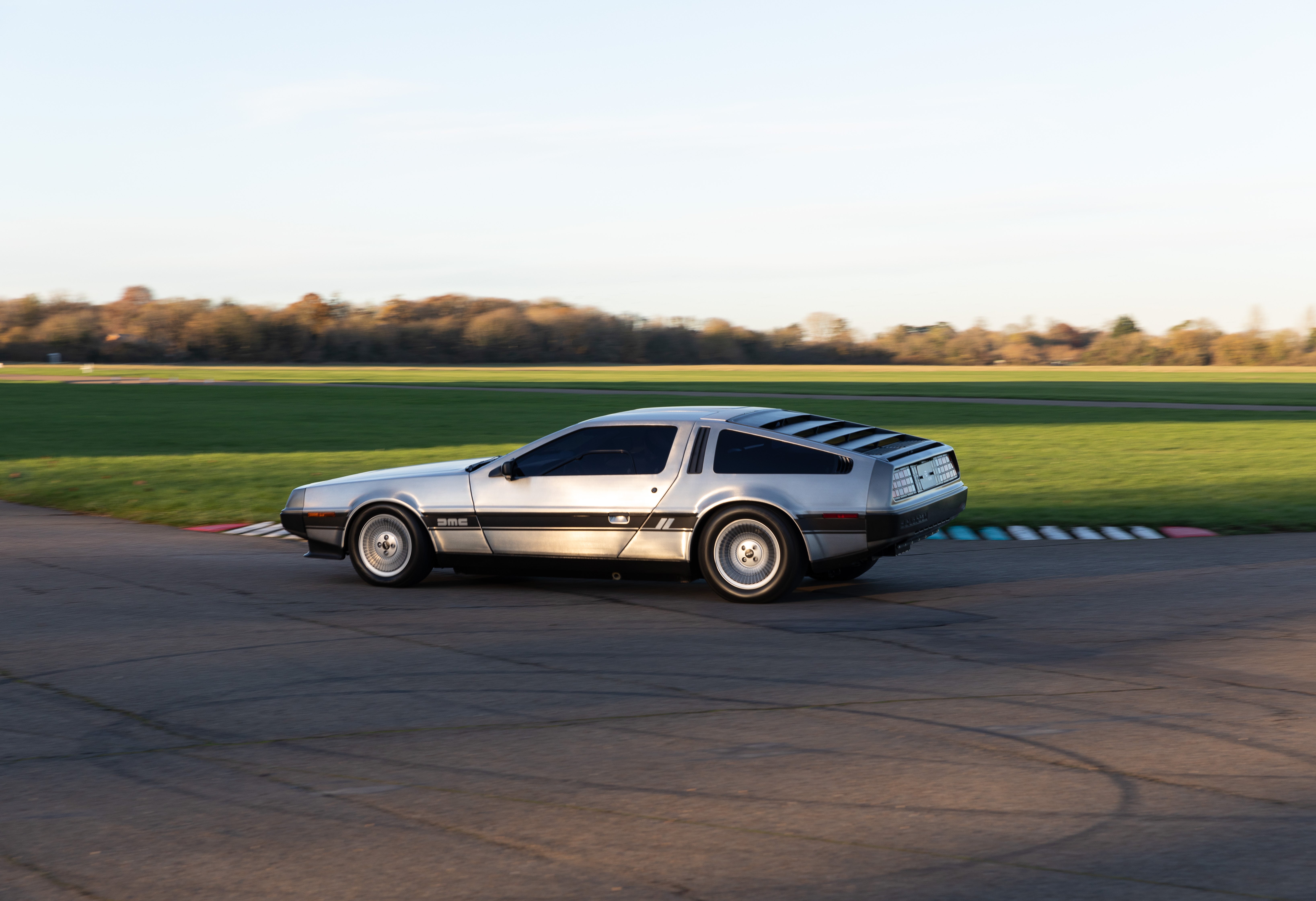
Enough chat, let’s go for a drive. We’re limited to the modest test track at Bicester Heritage, but numerous quick laps – plus a passenger ride to the circuit – is plenty to uncover the charm of this electrified icon.
As with almost every EV, the DeLorean accelerates strongly from low speed. It’s the sort of power that gives the car some urgency without overwhelming the standard chassis, suspension and brakes. Those could be upgraded too, of course, but in standard spec they feel up to the job – and, although there’s plenty of roll in the corners, the car doesn’t feel wayward or unpredictable.
Yet it also doesn’t feel sanitised in the way most modern EVs do. The interior creaks a little and it’s clear the car is of a certain age, despite the way it looks. The steering is heavy, since there’s no power assistance, and after a dozen laps of the small Bicester circuit I’m reminded just how much more effort older cars require from their driver.
At least when driven briskly, they do. Ease off, switch out of Sport mode and into Eco or Normal and the electrified DeLorean is a doddle to drive. The seating position is reclined and the low roof makes the cabin feel snug, but there’s good forward visibility (not so much over the shoulder, though), and I can imagine putting some serious miles on the clock.
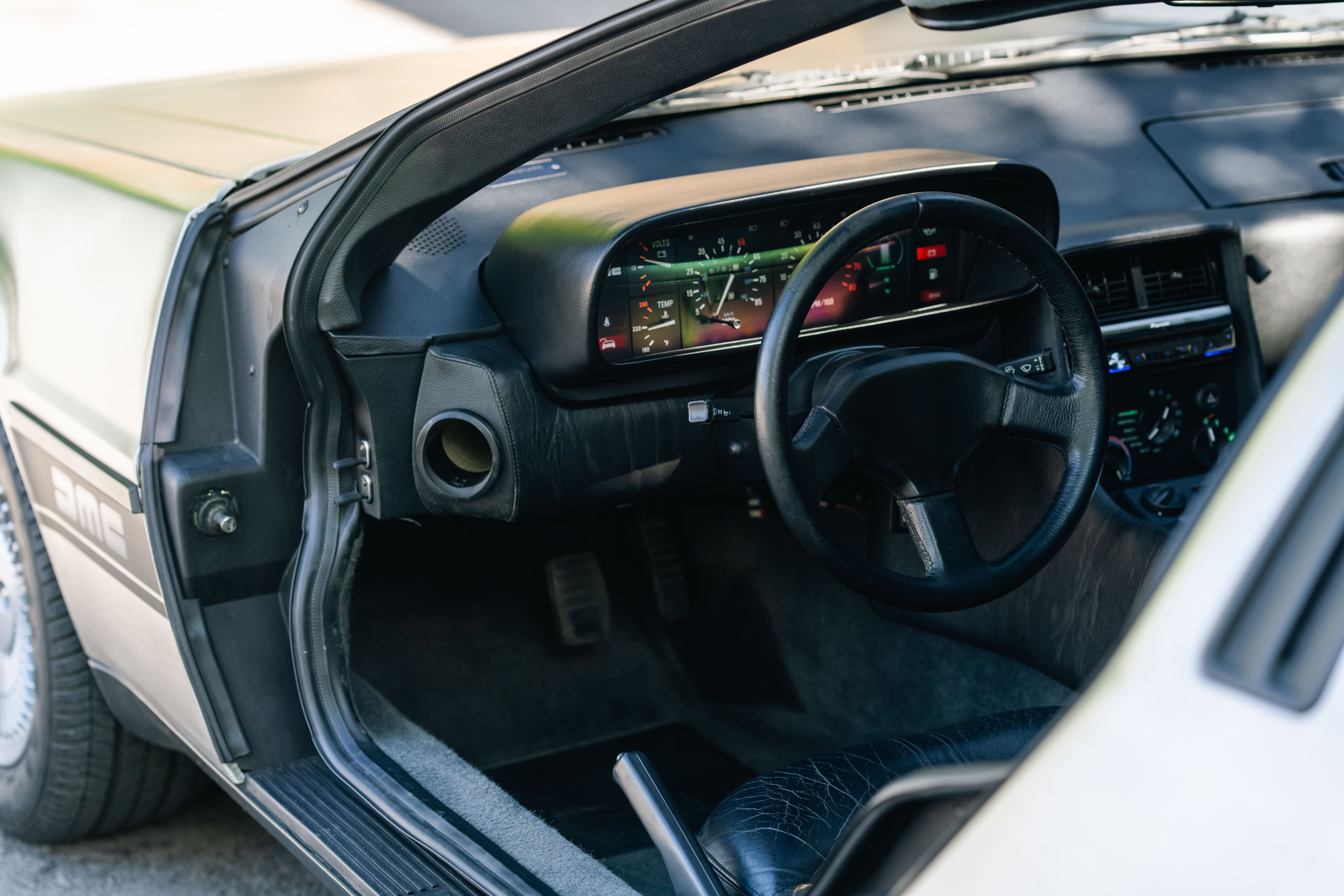
Speaking of the instruments, while they look original they have been repurposed to work with the electric drivetrain. The rev counter sits at 4,000 rpm, but this isn’t the speed of the motor. Instead, the needle swings upwards when the driver accelerates, then falls back below four when you lift the accelerator, to show the car’s regenerative braking system is harvesting kinetic energy and feeding it back into the battery. Regen is at its highest in Normal mode, slowing the car considerably when you lift off; when in Eco it is lessened and in Sport you need to give the brake pedal a firm press.
Converting classic cars to electric can be contentious. Stripping the engine out of a Jaguar E-Type or Porsche 911 – as Electrogenic and other such specialists do – is one thing, although customer demand is clearly there. But replacing an underpowered and uninspiring engine with a powerful and more reliable electric motor is quite another.
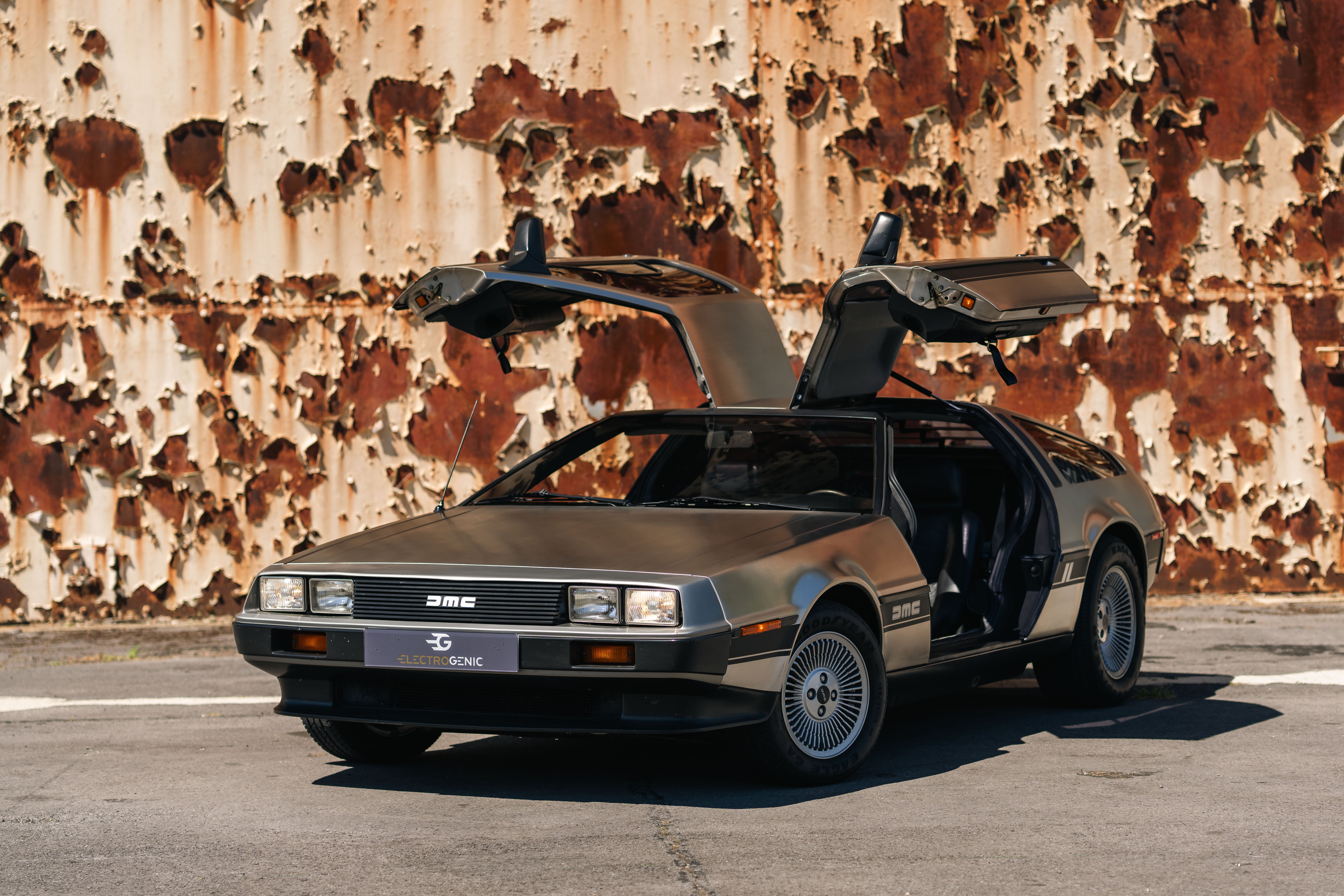
As with other classic EV specialists, Electrogenic’s customers are either older drivers who want to add electrified simplicity to their cars, or are younger and love the idea of a classic car, but aren’t sold on the complexities of upkeep. They want a car that looks incredible, but is easy to drive and maintain, and has no tailpipe emissions.
It’s undoubtedly a niche market – and it’s clear that Electrogenic’s military and car manufacturer clients are the bigger long-term targets – but long may bespoke projects like this reborn, and undoubtedly improved, DeLorean continue.
Join our commenting forum
Join thought-provoking conversations, follow other Independent readers and see their replies
Comments